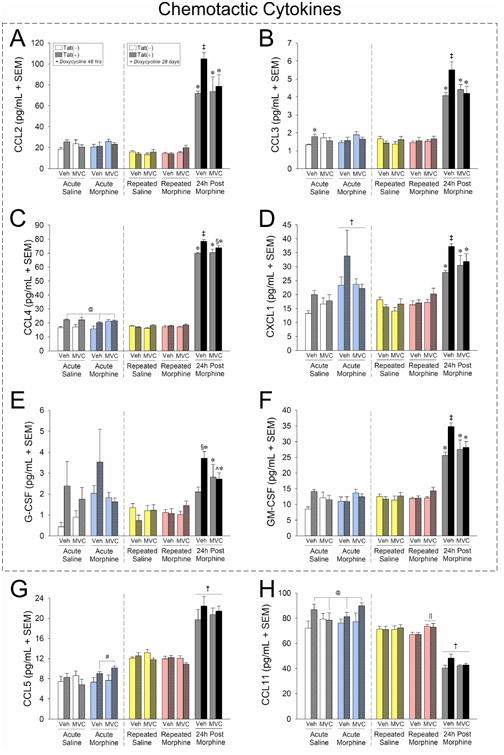Figure 6. Chemokine expression in caudate/putamen is largely upregulated 24 h following repeated morphine exposure; HIV-1 Tat potentiated this effect on some analytes (outlined) which was ameliorated by maraviroc pretreatment.

Chemotactic cytokine protein expression (pg/mL ± SEM) in dorsal striatum (caudate/putamen) of vehicle- (p.o.) or maraviroc- (62 mg/kg, p.o.) exposed mice [n = 4 – 5 / group; Tat(−) in open bars, Tat(+) in stippled bars] that had Tat expressed for 48 h or 28 days (via doxycycline). Mice were administered saline (i.p.; white bars) or morphine (10 mg/kg, i.p., QD) acutely (cyan bars), repeatedly (4 consecutive days; repeated saline in yellow bars and repeated morphine in magenta bars), or were 24 h post repeated morphine treatment (gray bars). Cytokines within the dashed box demonstrated Tat-potentiation that was ameliorated by maraviroc. @ main effect of Tat [Tat(+) mice have greater expression than Tat(−) mice, irrespective of morphine or maraviroc condition]. † main effect of morphine (indicated morphine group has greater expression than the respective saline group, irrespective of Tat or maraviroc condition). ‖ maraviroc-morphine interaction (indicated maraviroc-treated group differs from vehicle-treated control within the same morphine condition). Ģ 3-way interaction for indicated groups to differ from vehicle-treated, saline-administered, Tat(−) controls. ‡ 3-way interaction for indicated group to differ from all other groups. § 3-way interaction for indicated groups to differ from respective vehicle-treated, Tat(−) control within the 24 h post morphine group. ˆ 3-way interaction for indicated maraviroc-treated Tat(+) group be reduced compared to respective vehicle-treated Tat(+) group, p < 0.05.
